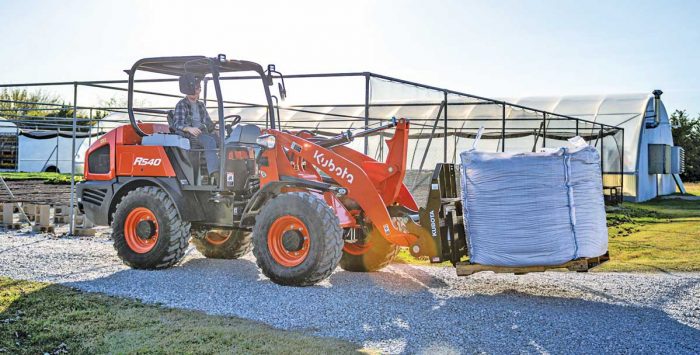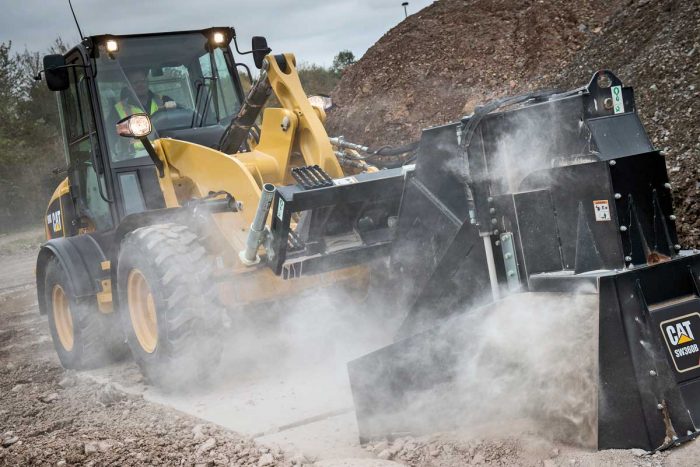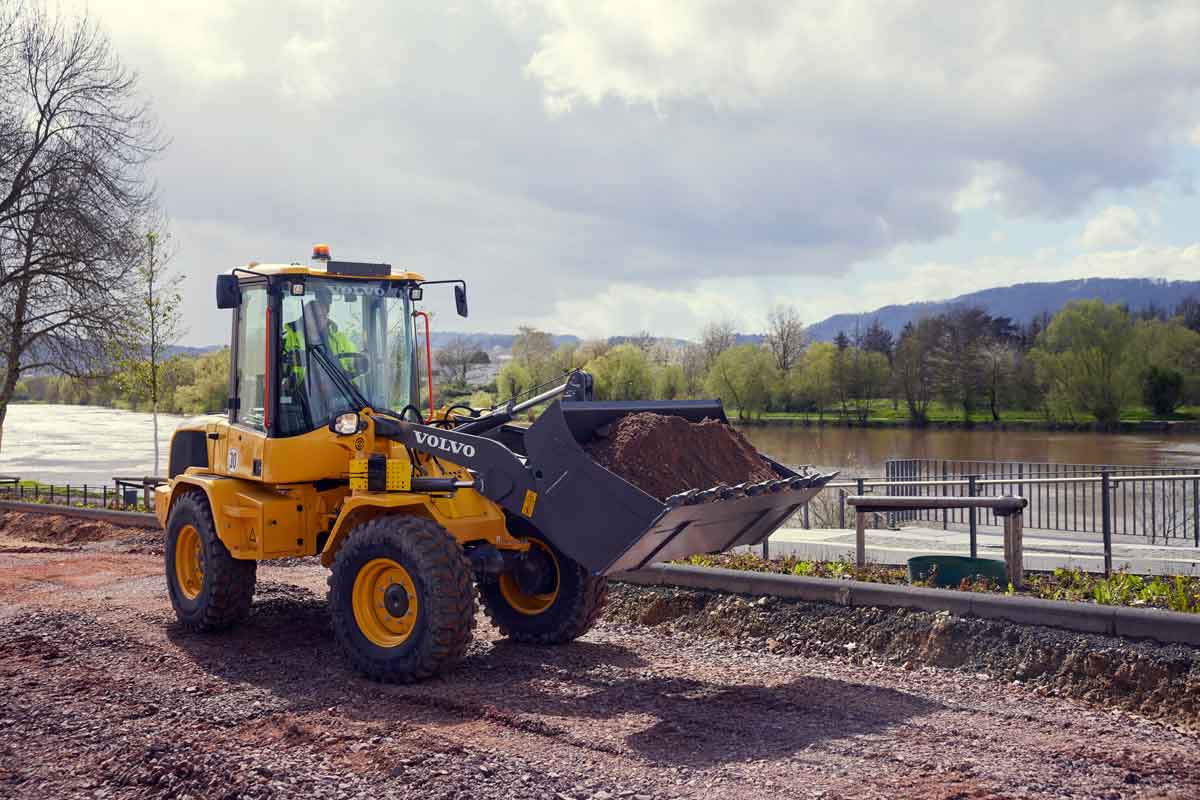Tips for Renting Compact Wheel Loaders

Ten years ago, compact wheel loaders were a niche machine category in America — popular in Germany and Asia — but an afterthought in the land of the skid steer. Today, there is a robust market with 10+ manufacturers offering small wheel loaders to U.S. equipment trades (with around 6,000 units sold in 2020), finding work in snow removal, supply shops, urban earthworks and everything in between. Similarly…
“In the past, the compact wheel loader rental market was most likely very niche,” says Patrick Baker, Kubota Construction Equipment product manager. “Now, with many people working around their homes and on their properties, the compact wheel loader rental market has blossomed. Kubota has seen an uptick in wheel loader additions to both major rental houses as well as Kubota dealer rental fleets.”
Compared to a skid steer or track loader, compact wheel loaders offer obvious advantages. Wheel loaders articulate or use all-wheel drive which is: A) easier on tires; B) easier on turf and other surfaces; and C) better on fuel efficiency. Other advantages include better visibility, faster ground speeds, serious ground clearance, longer wheelbases for better ride quality, greater lift capacities and higher lifting ability. When it comes to rental, the smallest units are the most popular, but how they are embraced depends on the locale and application.
“Regionally it can vary quite a bit from the Pacific Northwest, Northeast, Central Plains or Southeast, for example,” explains Scott Britton, Caterpillar compact wheel loader product application specialist. “Many machines, including compact wheel loaders, are placed into rental to help support temporary, surge or seasonal work for the end-users. All that being said, the trend for the most popular loader does tend to be on the smaller end of the product family. The 906M is the most popular model that is used in all kinds of applications with the leading industry being snow removal. To support that, a lot of times this machine is configured with a high-speed transmission with capability to go over 23 mph to get from site to site.”

Compact wheel loaders will be bought and configured differently on rental lots, depending on localized work. Professionals up north battling winter weather will see wheel loader rentals with high-powered LED lights, heated cabs, fast travel speeds and high-flow auxiliary hydraulics to run steely snow blowers. “Below the snowbelt, these loaders get pulled in for supporting roles of much larger jobs so the options can be drastically different — low speed transmissions, open ROPS canopies and completely different tires,” notes Britton.
Price will vary due to many factors: region, unit size, unit configuration, longevity of the rental, type of rental and ever onward. According to Frank Gangi, product manager of compact wheel loaders and attachments at Yanmar, expect the following rental pricing:
- $300 to 500 per day
- $800 to 1,000 per week
- $2,200 to 2,800 per month
“The prices are typically double for larger compact wheel loaders,” says Gangi, offering some other quick insights. “Make sure the lift height and lift capacity will work with the material type and amount you intend to move. Another thing to consider is the kinematics or linkage of the compact wheel loader. A parallel linkage would be the best option for pallet forks and grapples, whereas a Z-bar linkage is best suited for bucket work. Finally, if you are doing any work in the dark, make sure you have a great lighting package, like the work lights on the Yanmar compact wheel loaders.”
“The prices are typically double for larger compact wheel loaders,” says Gangi, offering some other quick insights. “Make sure the lift height and lift capacity will work with the material type and amount you intend to move. Another thing to consider is the kinematics or linkage of the compact wheel loader. A parallel linkage would be the best option for pallet forks and grapples, whereas a Z-bar linkage is best suited for bucket work. Finally, if you are doing any work in the dark, make sure you have a great lighting package, like the work lights on the Yanmar compact wheel loaders.”
Compact wheel loaders have tons of options: articulated or all-wheel steer machines; joystick and wheel controls; parallel lift and return-to-dig functions; air conditioned and heated cabs; creeper and rimpull controls; tire and attachment choices; roading lights and rotating beacons; LCD displays; security features; and so much more. Some units even have telescoping booms, but usually rental lots carry simple, scaled-back configurations that are more focused on ROI and low upfront cost than amenities and cool tech.
Compact wheel loaders can wield hydraulic attachments (in the 15- to 33-gpm range), with the ability to travel between different tasks at speeds over 20 mph. Augers, cold planers, grapples, snow blowers — a compact wheel loader has a toolbox full of job possibilities. Many compact wheel loaders can even utilize a skid steer attachment plate, so rental shops and renters can switch implements between loader categories (skid steer, track loader and wheel loader).
“The majority of our wheel loaders go out equipped with a bucket or forks for dirt work or material handling applications,” says Lee Padgett, product manager at Takeuchi-US. “Choosing the right size and model will depend on a few different factors, including the amount of breakout force or lifting capacity you will need to efficiently complete the task at hand. You’ll need to balance wheel loader size with available power for optimal productivity, as larger models may have more breakout force but won’t be as nimble on smaller jobsites.”

Size and specs are always a good place to start — engine horsepower, operating weight, breakout force, bucket capacity, travel speed, turning radius, width, height and beyond. To simplify it, start by focusing on loading (the major application). Selecting the right loader is often based on the amount of material (measured in cubic yards) that needs to be moved per hour, the weight of the material and the area in which the loader will be operating. It’s important that you know how the loader will get the material, how quickly the material needs to be moved and where the material needs to go.
When it comes to renting, understand the length of the job, the variety of payment structures, the different rental agreements, renter maintenance responsibilities and transportation.
“Delivery charges depend on if the customer is physically picking up the wheel loader at the rental yard or if the wheel loader is being delivered,” says Baker. “Usually, the cost will be cheaper if the renter can pick up the wheel loader themselves instead of having the wheel loader delivered to the job. That being said, the convenience of being able to continue to work on the job and have the wheel loader delivered to the jobsite may outweigh the cost of delivery and pickup.”
Keith Gribbins is publisher of Compact Equipment.





